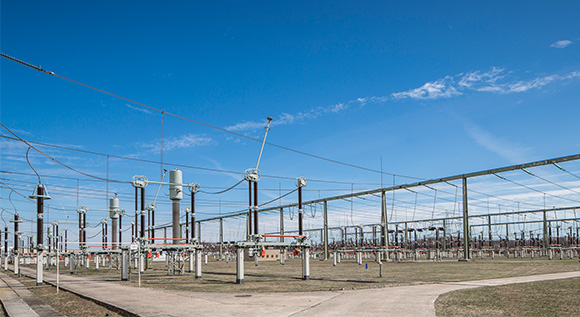Competition around the distribution grid
Should we take local interests into account? Absolutely. Should we compromise on energy security and cost efficiency? Absolutely not. Last week, the Federal Cabinet approved new rules governing the concessions for electricity and gas distribution grids and networks.
 © BMWi/Holger Vonderlind
© BMWi/Holger Vonderlind
No matter whether we live on an isolated farm or in a big city, all of us in Germany depend on a secure supply of gas and electricity to power appliances ranging from laptops to washing machines and kitchen stoves. The distribution grids and networks are the key to a ubiquitous supply of energy. They transport gas and electricity wherever it is needed – even to remote areas.
Depending on where you live, you will have different operators. In some regions, the grids and networks are operated by a private company, for instance a large energy corporation. Elsewhere, this task is performed by the public sector, say the municipal works. But there is one thing that applies everywhere: concessions can only be granted for a maximum of 20 years, after which time a new tender must be held. The exact rules underpinning this procedure are stipulated by the Energy Industry Act: Section 46 of the Act specifies that there has to be competition for the grids and networks, and that the process must be transparent. This is essential to maintaining and guaranteeing a good quality of service around gas and electricity networks and grids, which in turn requires innovation.
A way of strengthening the municipalities...
At the heart of the process is the right to use public land use for the purposes of building and operating gas and electricity networks and grids. This is called a "concession".
Last week, the Federal Cabinet decided to introduce new rules governing the awarding of concessions. These new rules will give the municipalities a stronger role in the procedure whilst ensuring that the process remains competitive. The revised version of the Act will create legal certainty, for instance for cases whereby a municipality decides that it wants to take over the local grid from the private company that used to operate it.
...without compromising on energy security or cost-efficiency
The new Act is to prevent controversy around the price of the grid by specifying the details of how this price is to be determined. Furthermore, the new law specifies the type of information that the former operator must disclose to the municipality. For the first time, it will be possible for "the interests of the local community" to be cited as a reason why a concession should be awarded to a particular operator. However, this only applies provided that this does not result in a decision that is less than sound economically and in terms of the energy industry. Most importantly, the decision must be sound in terms of energy security and in terms of costs.
In the interest of improving legal certainty for all those involved, the draft legislation also provides for new procedural rules and deadlines for legal challenges. This applies to the time at which the awarding of the concession is announced, the criteria used in the procedure, and the way in which the decision is made. In future, anyone who has an objection to the way in which any of these points have been dealt with, will have to voice this early on and following a set procedure. This will result in any mistakes in the awarding procedure being rectified at an early stage.
The "small grids" are becoming ever more capable
One of the effects of the energy transition is a need for distribution grids capable of dealing with a more complex task. Traditionally, the distribution networks have worked as a one-way street, but this is now changing. The more wind and solar power is fed into the grids, the more often they need to operate in reverse-flow, feeding power into the "large" grid. And this is happening at a massive scale. This is especially true for the grids in rural areas, which take up the bulk of the electricity generated by distributed PV, wind and biogas installations. These grids also have to be able to cope with fluctuating levels of wind and solar power.

